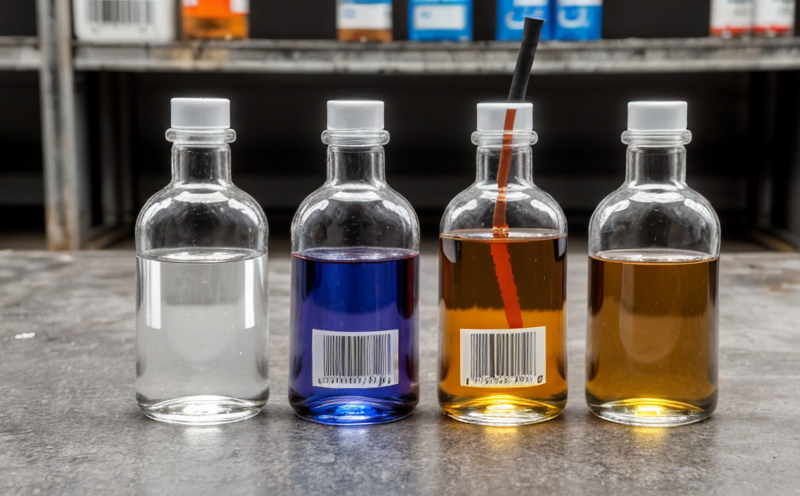EN ISO 4892 Plastics Stability Testing Against Light Exposure
The EN ISO 4892-3 standard provides a detailed protocol for assessing the photostability of plastics. This method evaluates how well a plastic material resists degradation when exposed to light, particularly ultraviolet (UV) radiation and visible light. Degradation can lead to changes in physical properties such as color, mechanical strength, and flexibility over time.
The test is critical for industries that rely on long-term outdoor exposure applications like roofing materials, automotive parts, packaging, and exterior building components. The purpose of this testing ensures that the plastic remains functional, safe, and aesthetically acceptable under real-world environmental conditions.
EN ISO 4892-3 specifies a combination of accelerated aging techniques to simulate prolonged outdoor exposure in a laboratory setting. This includes the use of xenon arc lamps for light simulation, which can replicate both UV and visible light. The standard also requires controlling temperature, humidity, and air flow within the test chamber to ensure accurate results.
The testing procedure involves exposing specimens cut to standard dimensions to artificial light sources under controlled conditions. Specimens are typically irradiated continuously or intermittently in a xenon arc lamp apparatus. The exposure time can vary depending on the desired outcome but is often set at 100, 250, and 400 hours for preliminary stability assessments.
During testing, it's important to monitor changes in color fastness, tensile strength, elongation at break, impact resistance, and other relevant properties. The standard provides specific criteria for evaluating the extent of degradation. For instance, any significant change in color or physical property is considered indicative of photodegradation.
The results of EN ISO 4892-3 are reported as changes in key properties before and after exposure to light. This data helps manufacturers and quality control teams make informed decisions about the suitability of a material for outdoor use. It also aids in setting realistic expectations for product longevity and performance under real-world conditions.
Accurate testing is essential, especially given the variability in natural sunlight across different geographic locations. The controlled environment provided by EN ISO 4892-3 ensures consistent results that can be replicated and compared over time or between laboratories.
This method complements other stability tests such as those conducted under temperature cycling or humidity conditions (EN ISO 14576). Together, these tests provide a comprehensive picture of how plastics behave in various environmental stressors. Understanding photostability is crucial for improving product design and ensuring compliance with international standards.
In summary, EN ISO 4892-3 plays a vital role in ensuring that plastic materials are durable and reliable when exposed to sunlight. This testing is particularly important for sectors like automotive manufacturing, where long-term durability is paramount, or construction, where aesthetic considerations must be balanced against functional requirements.
Why It Matters
Photostability testing using EN ISO 4892-3 is essential because it directly impacts the performance and lifespan of plastic products used in outdoor environments. Poor photostability can lead to premature failure, which increases maintenance costs and reduces product reliability.
- Aesthetics: Changes in color due to UV exposure can affect the appearance of materials, leading to customer dissatisfaction.
- Mechanical Properties: Degradation affects strength and flexibility, potentially compromising safety and functionality.
- Environmental Impact: Deteriorating plastics may release harmful substances into the environment, contributing to pollution.
By conducting this test, manufacturers can ensure that their products meet high-quality standards and are fit for purpose. This not only enhances customer satisfaction but also contributes to sustainable manufacturing practices by minimizing waste and resource use.
The test results help in optimizing product design, selecting appropriate raw materials, and determining the optimal shelf life of products. It supports compliance with international regulations and helps companies maintain a competitive edge in global markets.
Applied Standards
In addition to EN ISO 4892-3, other relevant standards include:
- ASTM D1678: Standard Test Method for Exposure of Plastics in the Outdoor Environment.
- EN 1052-3: Light Stability of Paints and Varnishes – Part 3: Determination of Lightfastness by Xenon Arc Apparatus.
- ISO 4892-7: Plastics – Photodegradation – Determination of light resistance in accelerated test conditions using xenon arc apparatus.
These standards provide a framework for various aspects of photostability testing, including exposure methods, acceptance criteria, and reporting requirements. Compliance with these standards is crucial for ensuring accurate and consistent results across different laboratories and regions.
The International Organization for Standardization (ISO) plays a key role in developing such standards to promote uniformity and reliability in testing procedures worldwide. By adhering to these internationally recognized guidelines, manufacturers can ensure that their products meet global quality benchmarks.
Industry Applications
The EN ISO 4892-3 standard finds application across multiple industries where photostability is critical:
- Automotive Industry: Exterior components like bumpers, grilles, and headlights require long-term durability.
- Construction Sector: Roofing materials, window frames, and exterior cladding must withstand environmental elements.
- Packaging Industry: Outdoor packaging needs to retain its integrity over time without degrading in appearance or performance.
- Sports Equipment Manufacturers: Products like outdoor signs, playground equipment, and sports balls benefit from photostability testing.
In these industries, the results of EN ISO 4892-3 help to ensure that products not only meet aesthetic expectations but also perform reliably under real-world conditions. This is particularly important for long-term projects where maintenance costs can be high and environmental impact significant.
By integrating photostability testing into their quality assurance processes, companies can enhance product longevity, reduce maintenance needs, and improve overall customer satisfaction. This testing is a vital component in achieving these objectives and ensuring compliance with international standards.





